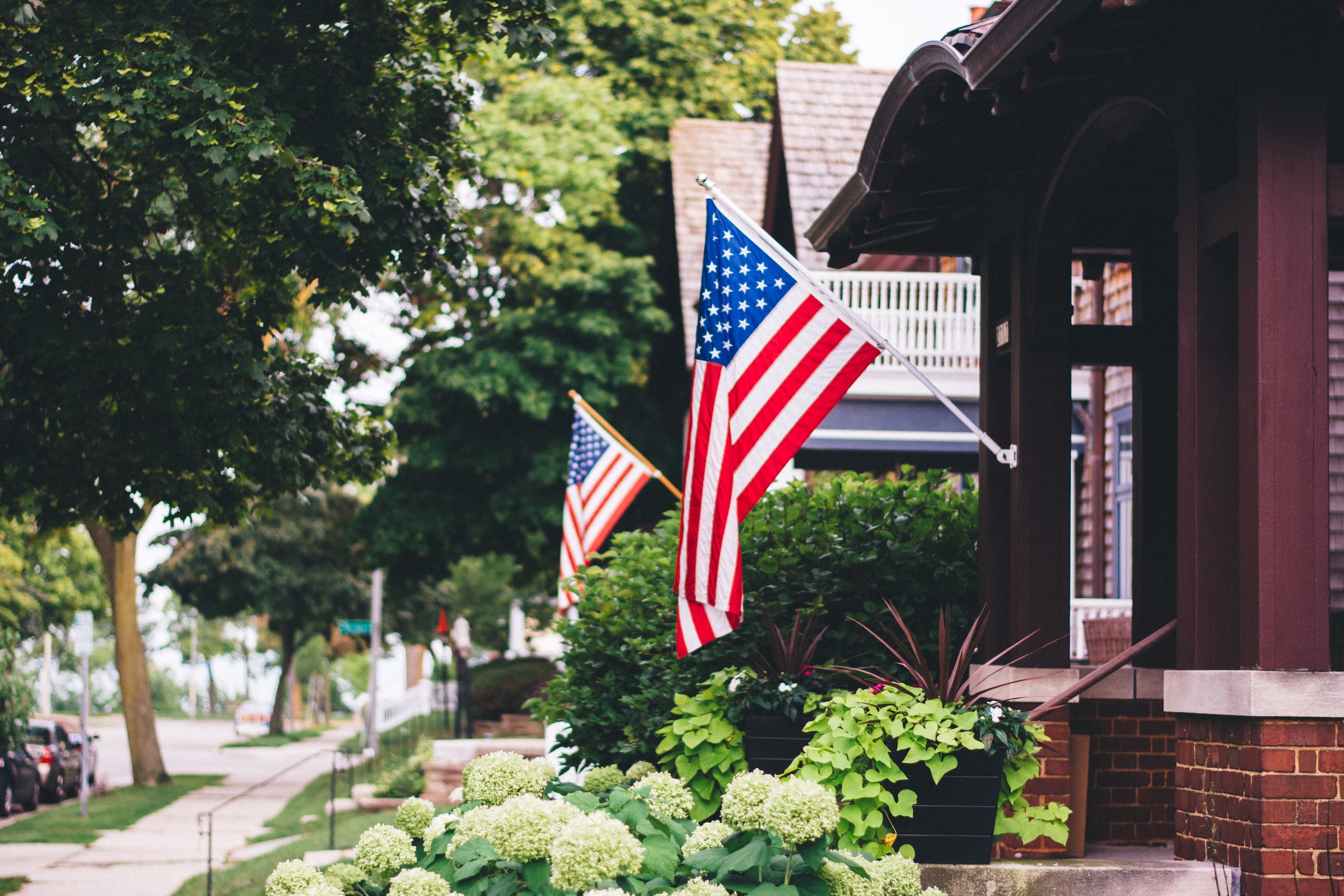
When Flag Day arrives on Wednesday, the day will mark precisely 240 years since the Continental Congress approved the stars and stripes design of the American flag and adopted it as a national symbol, on June 14, 1777. The “thirteen stripes, alternate red and white” and “thirteen stars, white on a blue field” would represent the “new constellation” that was the union of the original states.
These days, that pattern — expanded to account for the current 50 states — is everywhere, from fashion runways to a parking lot in Omaha, where a teen recently used 680,000 plastic bricks to create an image of the flag. But it would take nearly a century after the adoption of the flag pattern for that design to start showing up on Americans’ personal property or clothing and memorabilia, according to Marc Leepson, author of Flag: An American Biography.
Originally, government buildings and military outposts flew the flag as a utilitarian identification marker. “For the first two thirds of our nations history, it was almost unheard of for individual Americans to fly the flag or display the flag,” says Leepson.
That changed when the Confederates attacked the Union outpost Fort Sumter in Charleston, S.C., in April of 1861, in what would be the start of the Civil War.
“It has been said that when the flag came down in Fort Sumter, it went up everywhere in the North — almost like magic,” Leepson adds. “This was the beginning of what historians called ‘the cult of the flag,’ an almost religious feelings that the Americans have for the stars and stripes.”
During the last two decades of the 19th century, a period that saw both industrial revolution and the effort to reunite the nation after the Civil War, the flag image increasingly began appearing on national products and advertisements, thanks largely to advances in color printing and mass production. (In fact, flag protection measures to ensure proper handling of this “sacred” American institution were created only after the image of the flag started appearing on beer and whiskey bottles.) This groundswell of patriotism, as expressed via affection for the flag, continued through the official establishment of Flag Day in 1916, the selection of “The Star-Spangled Banner” as the National Anthem in 1931, and the official recognition of the Pledge of Allegiance by Congress on June 22, 1942.
As for the flag’s incorporation onto clothing and other personal items that go beyond the realm of actual banners, the 1970s saw a red, white and blue explosion.
First, that was the decade that saw the spread of what is perhaps the most ubiquitous (or at least most talked about) flag item these days. The flag lapel pin, now a mainstay for politicians, has been traced to the 1972 Robert Redford film The Candidate. Inspired by the movie, Republican President Richard Nixon and aide H.R. Haldeman helped popularize the wearing of the flag lapel pin, just as continued fighting in Vietnam and the burgeoning Watergate scandal were making many Americans question Nixon’s own patriotism, according to Woden Teachout’s Capture the Flag: A Political History of American Patriotism. At a time of great civil unease, wearing the flag could be a political statement and pundits at the time linked it specifically to the Republican side of the aisle. Coming out of the 1960s, wearing the flag (even as a t-shirt) could be, TIME noted, a potent symbol — and meanwhile, radicals tried (mostly unsuccessfully) to reclaim the flag or seize on its colors in parody, with tools such as red, white and blue marijuana joints, leaving some moderates feeling that they were better off staying away from red, white and blue altogether.
But, just a few years later, as the U.S. celebrated its bicentennial in 1976, the flag got a bipartisan boost.
“It is spreading — literally — from top to bottom, from tricolored wigs to toilet seats, planes and trains to municipal fireplugs, Tiffany diadems to morticians’ coffins,” TIME noted. “An instant industry has sprung up manufacturing Bicentennial gewgaws such as plastic tricornes, birthday buttons, patriotic bikinis and tricolor towels. With pride, affection and occasional humor, from motives ranging from crass commercialism to plain and fancy patriotism, Americans are splashing the land with primary color that, for a change, has nothing to do with elections.”
The rare chance to wave the flag for a reason that had nothing to do with a political statement or a military campaign was irresistible for Americans who began putting the flag pattern on everything from breakfast waffles to garbage trucks. And once it spread, there was no going back.
More Must-Reads from TIME
- Cybersecurity Experts Are Sounding the Alarm on DOGE
- Meet the 2025 Women of the Year
- The Harsh Truth About Disability Inclusion
- Why Do More Young Adults Have Cancer?
- Colman Domingo Leads With Radical Love
- How to Get Better at Doing Things Alone
- Michelle Zauner Stares Down the Darkness
Write to Olivia B. Waxman at olivia.waxman@time.com